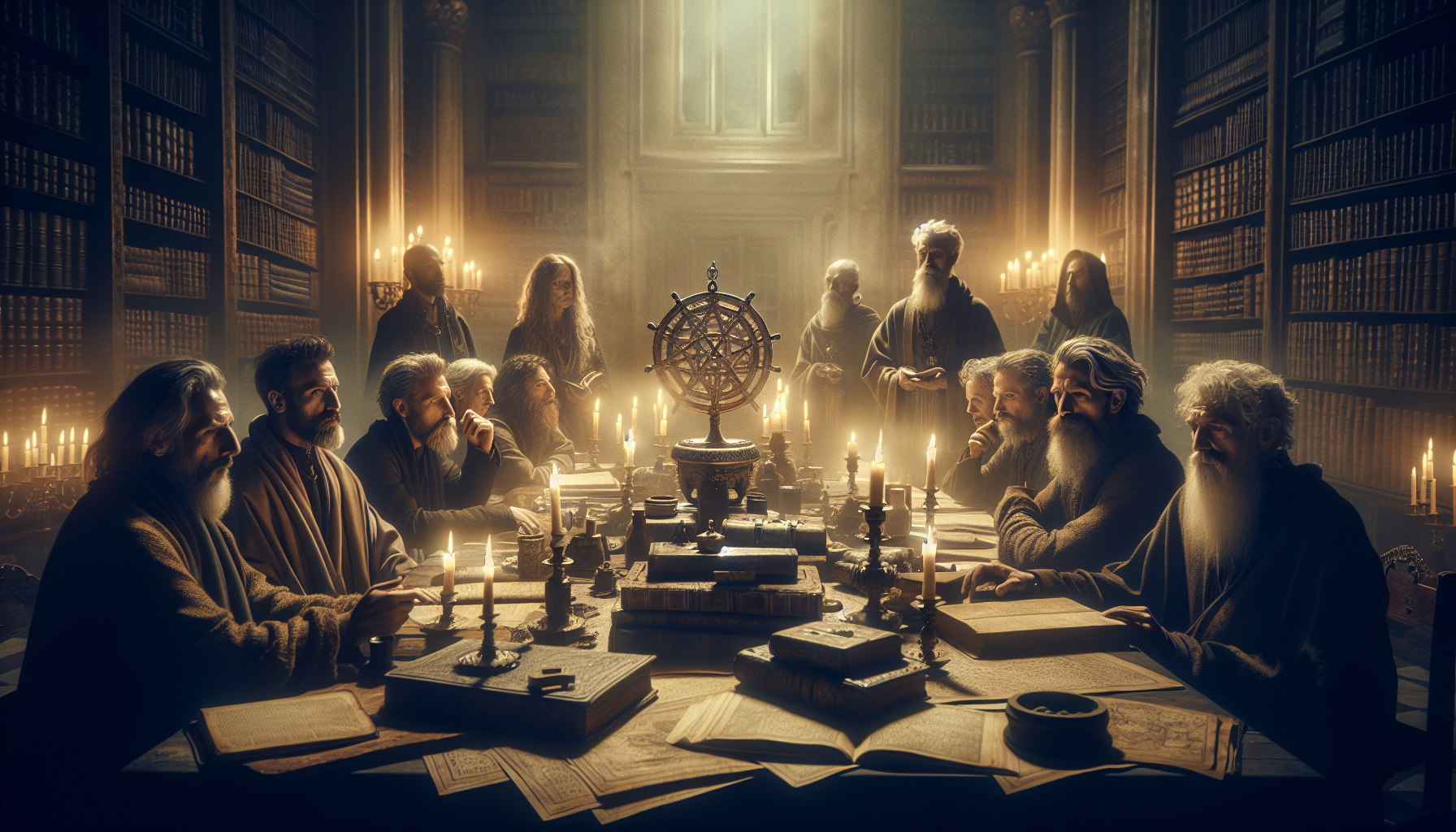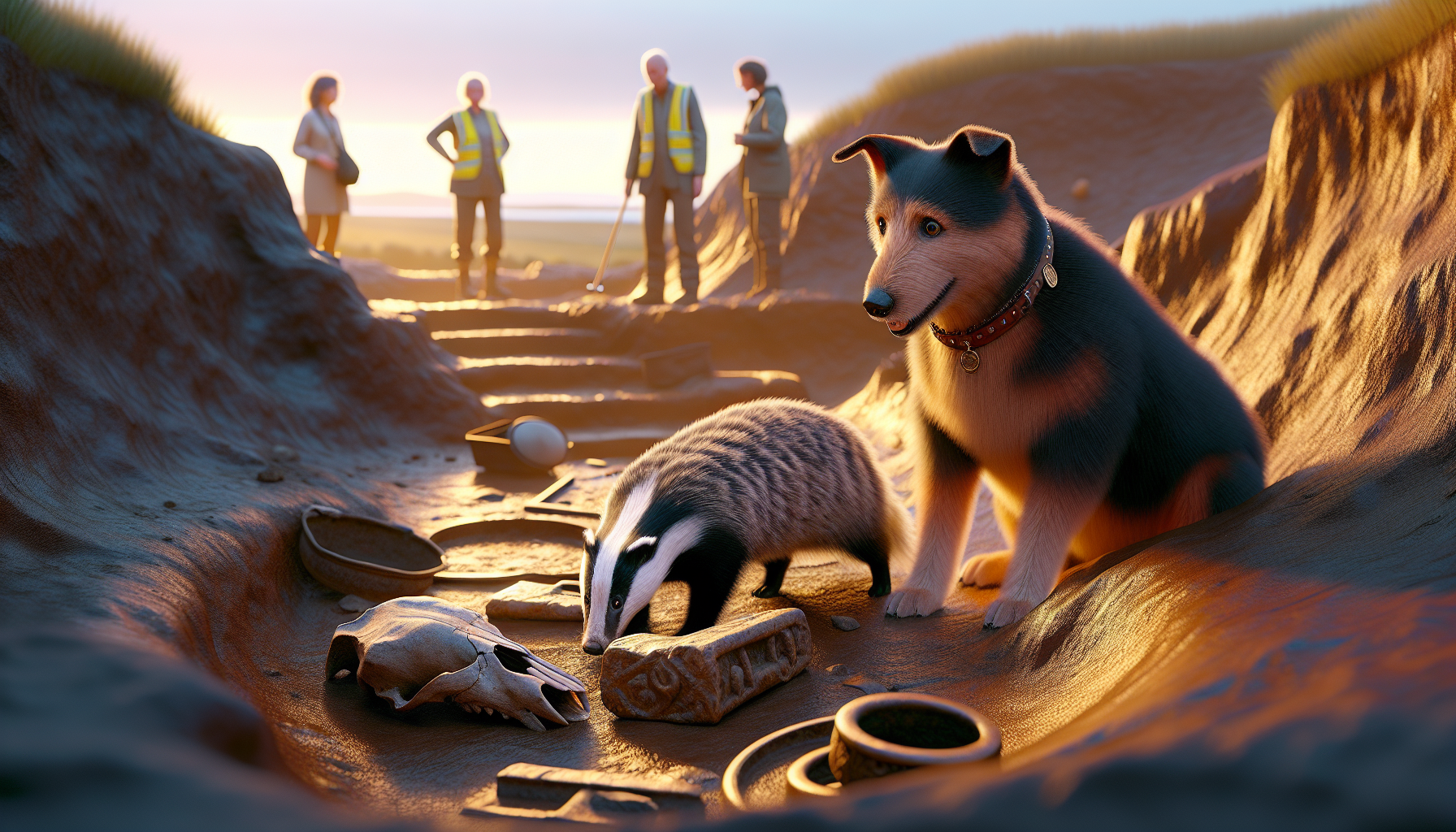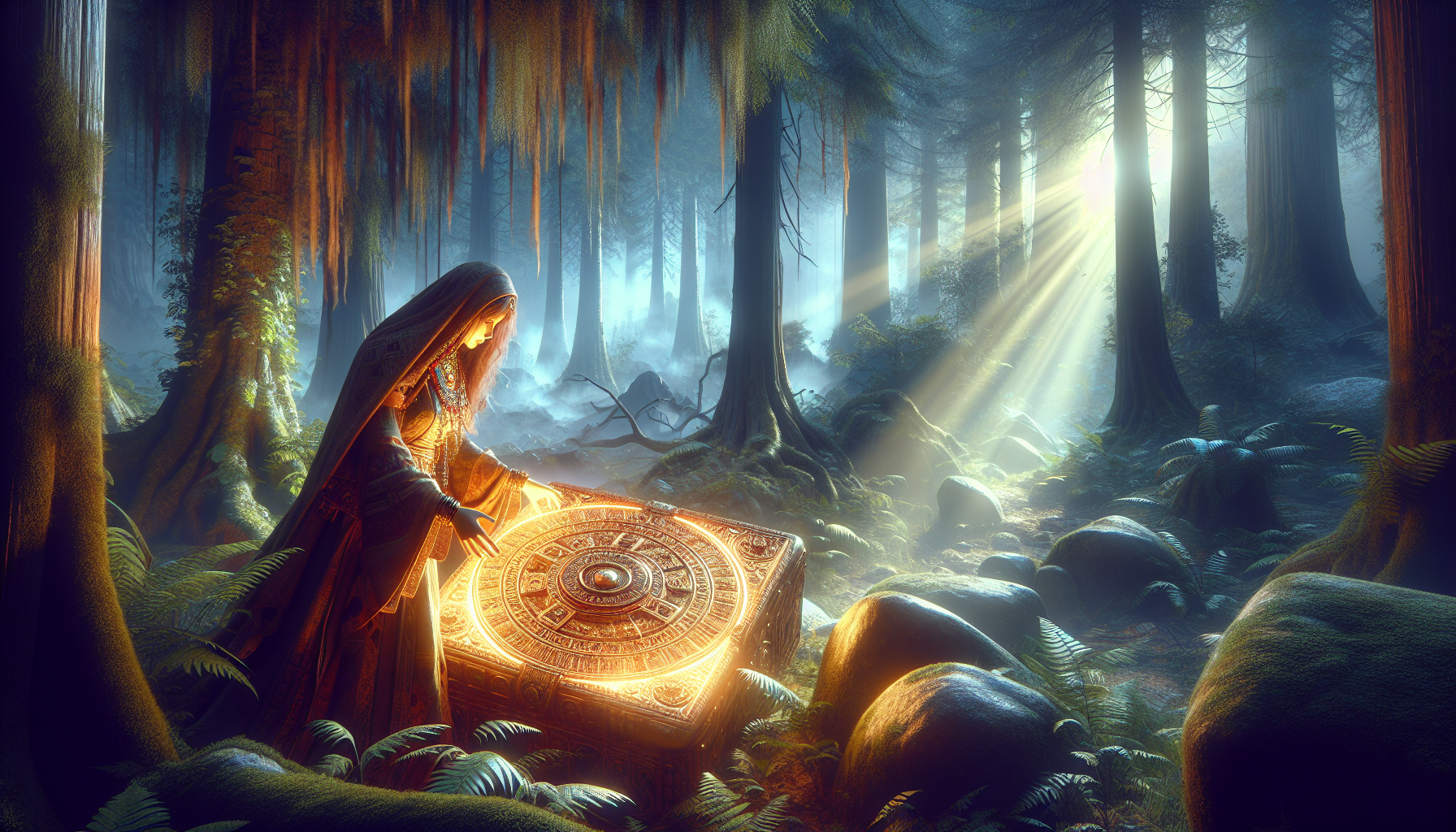In an era where digital screens dominate our lives and information is often just a click away, the tactile, tangible connection to the past is slowly fading into the background. Yet, nestled within the walls of schools and community centers around the globe, a quiet revolution is underway, harnessing the power of relics to breathe new life into history education. This movement, which places authentic historical artifacts into the hands of students and community members, offers an unparalleled opportunity to foster a deeper understanding and appreciation of the narratives that have shaped our world. As we embark on this exploration of “Unearthing History: The Power of Relics in Schools and Community Centers,” we will delve into the transformative impact these relics have on learning and community engagement, illustrating how they bridge the gap between past and present in a way that no textbook ever could. 📚✨
At the heart of this exploration lies the question: What makes relics so uniquely powerful in educational settings? Unlike photographs or digital simulations, relics are imbued with an intrinsic authenticity, carrying with them the weight and resonance of history. When a student holds a piece of pottery crafted thousands of years ago or a community member examines a tool used by their ancestors, they are engaging in a dialogue with history that is profoundly personal and immediate. This tangible connection ignites curiosity and empathy, transforming historical figures and events from abstract concepts into real, relatable stories. Through case studies and expert insights, we will uncover how educators and community leaders are creatively incorporating these artifacts into curricula and programming, inspiring a new generation to explore history with a sense of wonder and responsibility. 🌍🔍
Beyond the classroom, relics serve as powerful catalysts for community building, offering spaces for dialogue and shared discovery. In community centers, these artifacts become focal points for gatherings, discussions, and workshops that celebrate and preserve local heritage. They provide a platform for diverse voices to share their stories, fostering inclusivity and mutual respect. As we journey through this narrative, we will highlight the innovative ways in which community centers are using relics to strengthen bonds among individuals and groups, empowering them to take an active role in preserving their cultural legacies. By the end of this article, it is our hope that you will not only appreciate the profound impact of relics in educational and communal spaces but also feel inspired to advocate for their inclusion in your own community, ensuring that the past remains a vibrant, living part of our collective future. 🏛️❤️
The Importance of Relics in Education
The use of relics in educational settings is a powerful tool for bringing history to life, providing tangible connections to the past that books and lectures alone cannot offer. Relics serve as physical embodiments of historical events, people, and cultures, offering students a multi-sensory experience that can enhance learning and engagement. By incorporating relics into classrooms and community centers, educators can foster a deeper understanding and appreciation for history.
The presence of relics in educational spaces allows students to engage with history in a more interactive way. Instead of merely reading about historical events or figures, students can physically interact with objects from the past, sparking curiosity and prompting questions. This hands-on experience can lead to a more profound comprehension of historical contexts and the complexities of past societies. For instance, examining a piece of pottery from ancient Greece can open discussions about daily life, trade, and the artistic expression of the era.
Moreover, relics can serve as catalysts for interdisciplinary learning. When a relic is introduced in a classroom, it can be linked to various subjects such as history, art, science, and even mathematics. An ancient tool can illustrate technological advancements, while a religious artifact might prompt discussions on belief systems and cultural practices. This interconnected approach not only enriches the educational experience but also encourages critical thinking and the ability to make connections across different fields of knowledge.
How Community Centers Benefit from Historical Relics
Community centers play a crucial role in preserving and promoting cultural heritage, and relics are invaluable assets in this mission. By showcasing relics, community centers can become hubs of cultural education, offering residents an opportunity to explore their local history and heritage. This engagement with history can foster a sense of pride and identity within the community, strengthening social cohesion and collective memory.
Relics displayed in community centers can act as conversation starters, drawing in visitors who may not have a direct interest in history. By presenting relics in an accessible and engaging manner, community centers can reach a broader audience, including those who might not visit traditional museums or academic institutions. This accessibility ensures that history is not confined to the pages of textbooks but is instead a living part of the community’s daily life.
Furthermore, community centers can utilize relics to create interactive exhibits and workshops that encourage active participation. For example, a community center might host a workshop where participants can learn about the historical context of a relic and then create their own art inspired by it. Such activities not only educate but also allow for personal expression and creativity, making history relevant and exciting for participants of all ages.
The Role of Technology in Enhancing Relic-Based Education
Incorporating technology into relic-based education can significantly enhance the learning experience, making history more accessible and engaging for a tech-savvy generation. Through digital tools and platforms, educators and community leaders can expand the reach and impact of relics beyond their physical locations.
One effective way to leverage technology is through virtual reality (VR) and augmented reality (AR) experiences. These technologies allow users to explore historical sites and artifacts in immersive environments, offering a new dimension of learning. For instance, students can “walk” through ancient ruins or examine a relic up close in a virtual setting, gaining insights that are difficult to achieve through traditional methods. VR and AR experiences can also be used in community centers to create interactive exhibits that captivate audiences and provide a deeper understanding of historical contexts.
Additionally, digital archives and online databases provide valuable resources for both educators and students. These platforms offer access to high-quality images, detailed descriptions, and expert analyses of relics from around the world. By utilizing these resources, educators can supplement their lessons with rich, visual content that complements the physical relics in their classrooms. Community centers can also benefit from digital archives by creating online exhibits that showcase their relic collections to a global audience.
| Aspect | Traditional Method | Technology-Enhanced Method |
|---|---|---|
| Accessibility | Limited to physical location | Global reach through digital platforms |
| Engagement | Passive observation | Interactive and immersive experiences |
| Resource Availability | Physical relics only | Access to digital archives and VR/AR content |
Interactive Learning through Relics
Interactive learning is a critical component of effective education, and relics provide an excellent medium for fostering this type of learning. By engaging with relics, students can participate in a more dynamic and involved educational process, allowing them to connect with history in a meaningful way.
Interactive learning can be facilitated through hands-on activities, where students are encouraged to touch and examine relics under guided supervision. This tactile experience can be particularly beneficial for younger students or those with different learning styles, as it provides a break from traditional lecture-based learning and allows for a more personalized approach.
Another effective strategy for promoting interactive learning is through storytelling. Relics often have fascinating stories attached to them, and sharing these narratives can captivate students’ imaginations and inspire further exploration. By encouraging students to research and present their own stories related to relics, educators can foster critical thinking and communication skills.
Engagement through Multimedia
Multimedia resources are another valuable tool for enhancing the educational impact of relics. Videos, podcasts, and interactive websites can provide additional context and information, making the learning experience more comprehensive and engaging.
For example, a video tour of a historical site where a relic was found can give students a better understanding of its original context and significance. Podcasts featuring interviews with historians or archaeologists can offer expert insights and diverse perspectives on the relics being studied. These multimedia resources can be easily integrated into classroom lessons or community center exhibits, providing a rich, multi-layered learning experience.
- Use VR and AR to explore historical sites and artifacts.
- Access digital archives for high-quality images and analyses.
- Incorporate videos and podcasts for a comprehensive learning experience.
Building Community Connections through Relics
Relics have the unique ability to connect individuals and communities to their shared past, fostering a sense of continuity and identity. By engaging with relics, community members can explore their collective history and heritage, strengthening bonds and promoting social cohesion.
Community events centered around relics, such as exhibitions, lectures, and workshops, can serve as opportunities for residents to come together and celebrate their cultural heritage. These events can also provide a platform for community members to share their own stories and experiences, creating a richer tapestry of collective memory.
Moreover, relics can be used to educate future generations about the values and traditions of their community. By involving young people in the preservation and study of relics, communities can instill a sense of responsibility and pride in their cultural heritage, ensuring that it is passed down to future generations.
Preservation and Responsibility
Preserving relics is a vital aspect of maintaining cultural heritage, and community involvement is crucial in this endeavor. By participating in preservation efforts, community members can take an active role in safeguarding their history and ensuring its continued relevance.
Educational programs focused on preservation techniques can be organized by schools and community centers, providing valuable knowledge and skills to participants. These programs can cover topics such as artifact handling, documentation, and conservation methods, equipping community members with the tools they need to contribute to preservation efforts.
To enhance your understanding, watch the YouTube video: “The Magic of Historical Relics” by History Channel.

Conclusion
Unearthing History: The Power of Relics in Schools and Community Centers has explored the transformative impact that historical artifacts can have on educational environments and community engagement. Throughout this article, we’ve delved into various facets of how relics serve not only as educational tools but also as powerful symbols that foster a deeper connection to our collective past. By examining case studies and expert insights, we’ve highlighted the multifaceted benefits that come from integrating historical relics into schools and community centers.
One of the central themes discussed is the educational value of relics. These tangible pieces of history serve as a bridge between the past and present, offering students a hands-on learning experience that textbooks alone cannot provide. Relics make history tangible, allowing learners to engage with the past in a more meaningful and impactful way. As educators increasingly recognize the importance of experiential learning, relics present an invaluable resource for sparking curiosity and inspiring deeper inquiry into historical events and figures.
Additionally, relics play a significant role in fostering community identity and pride. They act as anchors that root communities in their shared histories, promoting a sense of belonging and continuity. In community centers, relics can be used to tell the unique stories of a locality, highlighting contributions and milestones that may otherwise be overlooked. This celebration of local history not only strengthens community bonds but also empowers individuals by affirming their place in the broader narrative of history.
The article has also discussed the interdisciplinary opportunities that arise from the presence of relics in educational settings. By integrating relics into curricula, educators can create cross-disciplinary links that enrich students’ understanding of history, art, science, and culture. This approach not only broadens students’ perspectives but also enhances critical thinking skills as they analyze and interpret historical evidence from multiple angles.
Another significant point highlighted is the role of technology in making relics more accessible. Digital archives, virtual reality, and interactive exhibits are revolutionizing the way relics are experienced, breaking down geographical barriers and bringing history to a wider audience. These technological advancements democratize access to historical knowledge, ensuring that even those who cannot physically visit museums or historical sites can still engage with relics in meaningful ways.
The importance of preserving relics for future generations was also emphasized. As custodians of history, schools and community centers have a responsibility to protect these artifacts from deterioration. This requires not only proper conservation techniques but also a commitment to educating the public about the significance of relic preservation. By fostering a culture of stewardship, we ensure that future generations will continue to benefit from the rich insights that relics provide.
In conclusion, the integration of historical relics into educational and community settings is a powerful tool for enriching learning experiences and strengthening community ties. These artifacts serve as tangible links to the past, offering invaluable lessons that transcend time. By engaging with relics, individuals are encouraged to explore their own histories and contribute to the ongoing dialogue about our collective past.
We invite you, the reader, to reflect on the impact that relics have had on your own understanding of history. Consider how you might apply what you’ve learned in your own community or educational setting. Whether it’s through visiting a local museum, participating in a history project, or advocating for the preservation of local artifacts, your involvement can make a difference. Share your thoughts and experiences in the comments below, and don’t hesitate to share this article with others who might be inspired by the power of relics. Together, let’s continue to unearth history and celebrate the stories that have shaped us all.
For further exploration, we recommend visiting the following active resources:
1. Smithsonian Learning Lab – A digital platform offering access to millions of Smithsonian resources, including artifacts and interactive tools for educators.
2. Google Arts & Culture – A platform that brings the world’s art and cultural heritage online for everyone.
3. National Archives – Access to millions of historical documents and artifacts that chronicle the American experience.
These resources can provide additional insights and materials to help further your understanding and appreciation of historical relics. 🌍📚
Thank you for joining us on this journey through history, and we look forward to hearing how relics have impacted your own journey of discovery.
Toni Santos is a visual storyteller and symbolic artisan whose work unearths the sacred in forgotten places — a seeker of relics not cast in gold, but in petal, vine, and stone.
Through a reverent artistic lens, Toni explores nature as a vessel for unknown religious relics — sacred echoes embedded in botanical forms, remnants of spiritual traditions that were never written but always felt. His creations are not merely decorative; they are quiet devotions, fragments of invisible altars, living prayers suspended in time.
Guided by an intuitive connection to flora and the mysteries they carry, Toni transforms botanical elements into symbolic artifacts — each one a relic of forgotten faiths, imagined rituals, or ancient wisdom left behind by time. His work invites reflection on how the divine speaks through organic beauty, and how the sacred often hides in the overlooked.
As the creative voice behind Vizovex, Toni curates collections and visual meditations that feel like lost sacred texts — poetic, intentional, and charged with quiet meaning. From floral talismans to mythic botanical studies, his work bridges earth and spirit, nature and memory.
His work is a tribute to:
The invisible sanctity found in everyday natural forms.
The mythic energy of plants as spiritual messengers.
The act of creating relics from silence, shadow, and growth.
Whether you’re drawn to mysticism, symbolic art, or the sacredness woven into the natural world, Toni invites you to explore a space where forgotten relics are remembered — one leaf, one symbol, one sacred fragment at a time.





